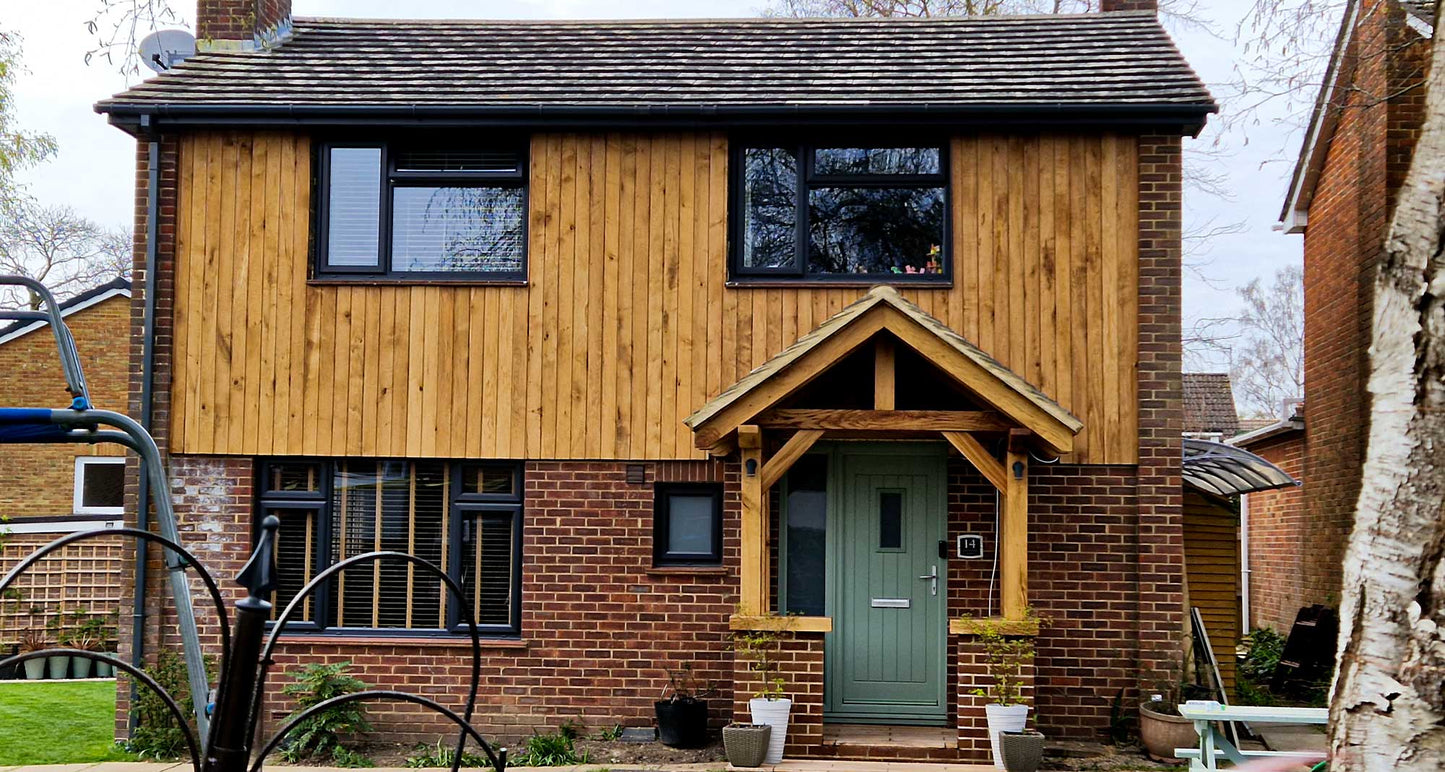
Oak fencing and oak exterior cladding are great choices for home improvement projects. This softwood has a distinct look and is able to withstand generations of wear and tear with good maintenance.
How Long Does Oak Fencing Last?
An untreated oak fence lasts around 20 years. That’s rather short, but that accounts for the oak being untreated and exposed to moisture and rising damp year-on-year. When you treat the wood, provide annual maintenance, and prevent rising damp, fencing can last up to 40 years and beyond.
How Long Does Oak Cladding Last
Untreated oak exterior cladding lasts about 30 years. It gains 10 years over oak fencing because it’s affixed to a stronger structure, less exposed to elements, and less likely to experience rising damp. When treated and maintained, you can expect its life expectancy to rise up to 60 years.
Weather-Proofing Your Oak Fence and Cladding
Your strongest enemies to guard against are the sun and the rain. Oak naturally takes on water when it rains and sends it to the parts of the tree that needs it. But it’s no longer a tree, and that water ingress can instead lead to mould and rot.
The boards that make up your oak fencing and exterior cladding no longer have the thick bark that protects them from the UV rays emitted from the sun. Over time, UV rays can bleach the colour.
To protect against both, you must use exterior wood protective oil that is weather resistant and protects against UV rays. And it must be applied once every 12 months or the time indicated by the product. You can buy these oils with particular stains, but we sell clear wood protective oil so that the signature oak colour doesn’t fade. This oil also works for timber decking!
How to Apply Exterior Wood Protective Oil
- Ensure all surfaces are clean, dry, free of mould/fungus and free from any previous finish.
- Sand the substrate with a medium 120 grade sanding paper. This removes all traces of dust and will help the oil stick.
- In dry conditions, apply using a good quality brush evenly and thoroughly, following the direction of the grain.
- Leave to dry for the time indicated by the product’s instructions (usually 4-6 hours or overnight)
- Sand lightly with fine 320 grade sandpaper to prepare for the next coat
- Apply additional coats required by the product using the same method in step 3.
- After a year or the time indicated by your chosen product, lightly sand the area with 150 grade sandpaper and re-apply.
Can Oak Wood be Painted?
Yes, if you use a weather resistant paint with UV protection. These paints may require a protective undercoating or primer, followed by a protective overcoating to ensure the paint lasts long. Always check and follow the product’s instructions for the best results.
Paint flakes or cracks over time, so you will need to sand and reapply coatings of paint as you would do for exterior wood protective oil. The choice of whether to use paint or a protective oil is down to your aesthetic preferences.
How to Clean Oak Fences and Cladding
As long as you sufficiently treat oak wood with a protective coating, then the only cleaning agents you need is a cloth, warm water, and soap. This will clean the majority of dust, dirt and stains. You can also use a pressure washer to clean off dirt, it won’t diminish the protective coating, but could reach places you haven’t treated if you weren’t thorough..
When cleaning, be on the lookout for any signs of mould, moss, and damp. You’ll know if there’s a problem with oak exterior cladding or fencing if you see the following signs:
- Black, green, or white spots growing on the surface
- Musty odour
- dark/green discolouration of the wood
- If the wood is soft and spongy, it means significant damage has occurred, and you may need to replace that panel
If you notice these, it’s a sign that the protective coating wasn’t applied properly, or that damp is affecting the fence or building.
How to Get Rid of Mould on Fencing & Cladding
You’ll want to address the cause of the issue first. For cladding, there may be a cavity ventilation issue, or a leaking pipe on the building interior causing a build-up of moisture. For fencing, damp primarily occurs because no proofing was put in place when the fence was installed. Your oak panels may have also developed a crack that is allowing moisture to penetrate past the protective coating.
Undiluted white vinegar can be poured or sprayed on the affected areas. This method is best for treating very light mould infestations. For heavier mould infestations, use hydrogen peroxide, bleach, or a commercial mould remover. Be aware that these can discolour the wood, and you may want to sand or paint over to hide this.
Once the mould is gone, you can sand the affected oak to remove stains before re-applying a protective coating over it.
How to Repair Small Cracks in Oak Fencing and Cladding
As the years pass, oak may naturally develop cracks. This is nothing to worry about, except if the crack goes through the entire thickness of the timber and is larger than a 5p coin. These larger cracks can be a sign of external damage or a problem with structural integrity.
But for smaller cracks, all you need to do is ensure the area is dry, before sanding down and applying oil to protect the crack from the weather. If the oak is painted, you could use an external timber polyfiller to close up the gap, sanding to a smooth finish, then applying paint.
